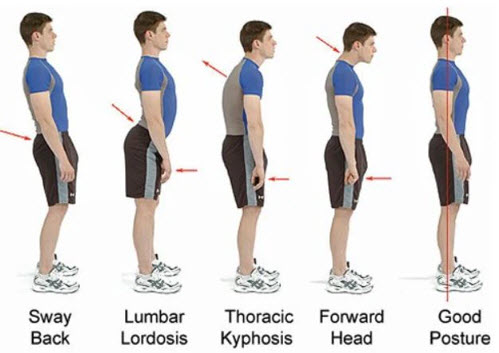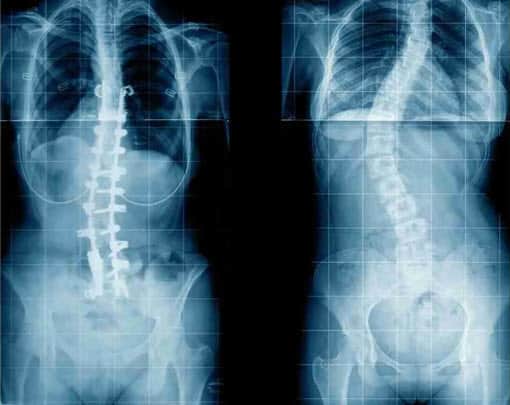
Spinal Misalignment
Spinal misalignment, also known as vertebral subluxation, is a common condition that affects many individuals. It occurs when the vertebrae in the spine become misaligned or move out of their normal position. This misalignment can cause a variety of symptoms and discomfort, impacting an individual’s overall well-being.
Spinal misalignment can occur due to various reasons, such as poor posture, repetitive motions, trauma, or degenerative conditions. It can affect people of all ages, from infants to the elderly. The severity of the condition can vary, ranging from mild discomfort to debilitating pain.
When the vertebrae are misaligned, it can lead to nerve irritation or compression, affecting the proper functioning of the nervous system. This can result in a range of symptoms, including back pain, neck pain, headaches, muscle stiffness, and limited mobility.
Identifying spinal misalignment is crucial for effective treatment and management. Chiropractors are experts in diagnosing and treating this condition. They utilize their extensive knowledge of the musculoskeletal system to assess the spine’s alignment and identify any misalignments or subluxations.
By using manual adjustments and other specialized techniques, chiropractors can gently realign the vertebrae, relieving pressure on the nerves and restoring proper function to the spine. This can alleviate pain, improve mobility, and enhance overall well-being.
It is important to address spinal misalignment promptly, as untreated misalignments can lead to further complications and chronic pain. Seeking chiropractic care can not only provide immediate relief but also prevent future issues and promote long-term spinal health.
Symptoms & Different Stages of Spinal Misalignment
Spinal misalignment, also known as vertebral subluxation, refers to the condition where the vertebrae in the spine are not properly aligned. This can result in a variety of symptoms and can progress through different stages if left untreated.
- Early Stage: In the early stages of spinal misalignment, individuals may experience mild discomfort or stiffness in the neck, back, or shoulders. They may also notice a decrease in their range of motion and flexibility.
- Moderate Stage: As the condition progresses, the symptoms may become more pronounced. Individuals may experience chronic pain in the affected area, which can radiate to other parts of the body. They may also notice muscle weakness and spasms.
- Advanced Stage: In the advanced stages of spinal misalignment, individuals may experience severe pain and limited mobility. The misaligned vertebrae can put pressure on the nerves, leading to numbness, tingling, or weakness in the arms or legs. They may also experience headaches, dizziness, and difficulty maintaining proper posture.
It is important to note that the symptoms and progression of spinal misalignment can vary from person to person. Some individuals may experience rapid progression, while others may have a slower onset of symptoms. Additionally, the severity of the symptoms may also depend on the location and extent of the misalignment.
While mild discomfort or stiffness may not be a cause for immediate concern, it is important to pay attention to any persistent or worsening symptoms. If you experience any of the following, it may be a sign that your spinal misalignment requires medical attention:
- Severe or chronic pain
- Numbness or tingling in the arms or legs
- Muscle weakness or spasms
- Difficulty maintaining proper posture
- Headaches or dizziness
If you are unsure whether your symptoms are related to spinal misalignment or if you are concerned about your condition, it is always best to consult with a qualified healthcare professional. They can provide a proper diagnosis and recommend appropriate treatment options, such as chiropractic care, to help alleviate your symptoms and improve your overall spinal health.

Most Common Causes of Spinal Misalignment
Spinal misalignment, also known as vertebral subluxation, can occur due to various factors. Understanding this condition’s most common causes is crucial to prevent its occurrence and seek appropriate chiropractic treatment for neck pain. Here are some of the primary causes:
- Poor Posture: Maintaining poor posture for extended periods can put excessive stress on the spine, leading to misalignment. Slouching while sitting or standing, improper lifting techniques, and hunching over electronic devices are common culprits.
- Trauma or Injury: Accidents, falls, or sports-related injuries can result in spinal misalignment. Sudden jolts or impacts can displace the vertebrae, disrupting their proper alignment.
- Repetitive Motion: Engaging in repetitive activities or movements that strain the spine can gradually contribute to misalignment. This is commonly observed in individuals with physically demanding occupations or those who perform repetitive tasks without proper ergonomics.
- Weak Muscles: Weak muscles surrounding the spine fail to provide adequate support, making it more susceptible to misalignment. A sedentary lifestyle, lack of exercise, or muscle imbalances can cause this.
- Joint Degeneration: As we age, the natural wear and tear on the joints can lead to degeneration. This can result in changes to the structure of the spine, leading to misalignment.
- Stress and Emotional Factors: Chronic stress and emotional tension can manifest physically, causing muscle tightness and stiffness. These factors can contribute to spinal misalignment over time.
It is important to note that spinal misalignment can occur due to a combination of these causes, and each individual may have unique contributing factors. Identifying and addressing the underlying causes is essential in effectively treating and preventing spinal misalignment.
Progression of Spinal Misalignment
If left untreated, spinal misalignment can lead to worsening symptoms and potentially serious complications. Here are some ways in which the condition can progress:
- Increased pain: As spinal misalignment worsens, the pressure on the surrounding nerves and tissues can cause persistent and intense pain. This pain may radiate to other areas of the body, making daily activities increasingly difficult.
- Reduced mobility: With the progression of spinal misalignment, the affected joints and muscles may become stiff and less flexible. This can lead to a decreased range of motion and difficulty in performing simple movements.
- Postural abnormalities: As the spine becomes more misaligned, it can affect the body’s overall alignment. This can result in postural abnormalities such as a hunched back or uneven shoulders, which can further contribute to pain and discomfort.
- Nerve compression: Spinal misalignment can cause the vertebrae to put pressure on the nearby nerves. This compression can lead to symptoms such as tingling, numbness, and weakness in the affected areas.
- Increased risk of injuries: Misalignment in the spine can disrupt the body’s natural balance and stability. This can make individuals more prone to injuries, as the body may not be able to absorb impact or maintain proper alignment during physical activities.
It is important to note that the progression of spinal misalignment can vary from person to person, depending on factors such as the underlying cause, individual health, and lifestyle. However, seeking early treatment from a chiropractor can help prevent the condition from worsening and alleviate symptoms before they become debilitating.
Chiropractic for Spinal Misalignment
Chiropractic care is a non-invasive and drug-free approach that focuses on the alignment and function of the spine. It aims to restore proper spinal alignment, which can help alleviate pain and discomfort associated with spinal misalignment. Chiropractors are highly trained professionals who specialize in diagnosing and treating musculoskeletal conditions, including spinal misalignment.
Here are some ways in which chiropractic care can help with spinal misalignment:
- Spinal adjustments: Chiropractors use manual manipulation techniques to gently realign the spine. By applying controlled force to specific joints, they can improve spinal mobility, reduce inflammation, and relieve pressure on the nerves. This can help alleviate pain and improve overall function.
- Posture correction: Chiropractors can assess your posture and guide proper body mechanics. They may recommend exercises and stretches to strengthen the supporting muscles and improve posture, which can help prevent further misalignments.
- Soft tissue therapy: Chiropractors may use various soft tissue techniques such as massage, trigger point therapy, or myofascial release to address muscle tension and tightness. By releasing tension in the surrounding muscles, they can support the realignment of the spine.
- Lifestyle modifications: Chiropractors may provide advice on ergonomics, proper lifting techniques, and exercises to improve core strength. These lifestyle modifications can help support spinal alignment and reduce the risk of future misalignments.
It’s important to note that chiropractic care is a holistic approach that focuses on addressing the root cause of the problem rather than just treating the symptoms. By restoring proper spinal alignment, chiropractic care aims to improve the overall function of the body and promote natural healing.

Self-Help & Relief for Spinal Misalignment
While chiropractic care can greatly assist in relieving the symptoms of spinal misalignment, there are also self-help methods that patients can explore to find relief from this condition. These methods can be used in conjunction with chiropractic treatment for back pain to enhance the overall effectiveness of the therapy.
- Posture Correction: Maintaining good posture is crucial for preventing and managing spinal misalignment. Patients should be mindful of their posture, especially when sitting or standing for extended periods. Using ergonomic chairs and pillows can also provide additional support.
- Stretching and Strengthening Exercises: Engaging in specific stretching and strengthening exercises can help improve the flexibility and strength of the muscles surrounding the spine. This can aid in reducing pain and discomfort associated with spinal misalignment. A chiropractor can provide guidance on which exercises are most beneficial for each individual.
- Heat and Cold Therapy: Applying heat or cold packs to the affected area can help alleviate inflammation and reduce pain. Heat therapy can relax the muscles, while cold therapy can numb the area and reduce swelling. Patients should consult with their chiropractor to determine which therapy is most suitable for their condition.
- Ergonomic Modifications: Making ergonomic modifications to the patient’s workspace or environment can significantly reduce the strain on the spine. This may include adjusting the height of the computer monitor, using a supportive chair, or using a standing desk to promote better posture.
- Stress Management: Stress can contribute to muscle tension and exacerbate spinal misalignment. Engaging in stress-reducing activities such as meditation, deep breathing exercises, or yoga can help alleviate tension and promote relaxation.
It is important to note that while these self-help methods can provide temporary relief, they may not address the underlying cause of spinal misalignment. Chiropractic care, with its focus on spinal adjustments and realignment, can provide more comprehensive and long-lasting relief. Therefore, it is advisable to consult with a chiropractic health expert to receive a personalized treatment plan tailored to your specific needs.
When to Seek Professional Help
Living with pain is never ideal, and when it comes to spinal misalignment, it is important to seek professional help sooner rather than later. While self-relief methods can provide temporary relief, they do not address the underlying cause of the condition. Ignoring or enduring the pain can lead to further complications and potentially worsen the condition.
If you are experiencing persistent pain, limited mobility, or any of the symptoms associated with spinal misalignment, it is time to consult a healthcare professional. Chiropractors specialize in diagnosing and treating spinal misalignment, and they can provide targeted and effective solutions to alleviate your pain and restore proper alignment.
During your chiropractic visit, the practitioner will conduct a thorough examination to assess the extent of the misalignment and identify any related issues. They may use diagnostic imaging, such as X-rays, to get a clear picture of your spine’s condition. Based on their findings, they will develop a personalized treatment plan tailored to your specific needs.
Chiropractic care for spinal misalignment may involve spinal adjustments, manual manipulation techniques, and other therapeutic modalities. These treatments aim to realign the spine, reduce inflammation, improve mobility, and alleviate pain. Your chiropractor may also provide you with exercises and stretches to do at home to complement the in-office treatments.
Remember, it is essential to address spinal misalignment promptly to prevent further complications and improve your overall quality of life. Do not hesitate to reach out to a chiropractic professional who can guide you toward a pain-free and healthier future.

Dr. Jenny Li is America trained chiropractor who specialises in sports injury, sports performance, and spinal health. She graduated from Palmer College of Chiropractic in United States, upon completion of the her post graduate program she practiced in Hong Kong and currently is practicing in Singapore.

